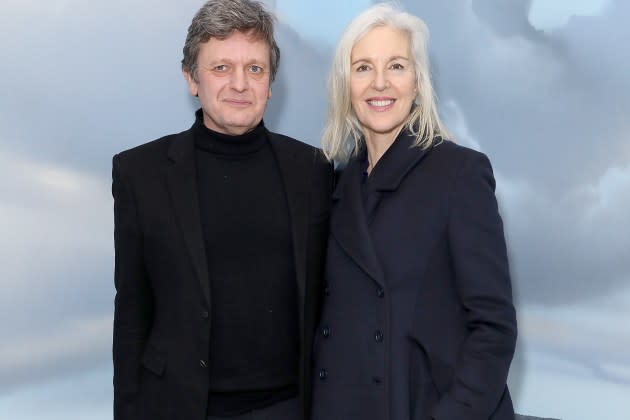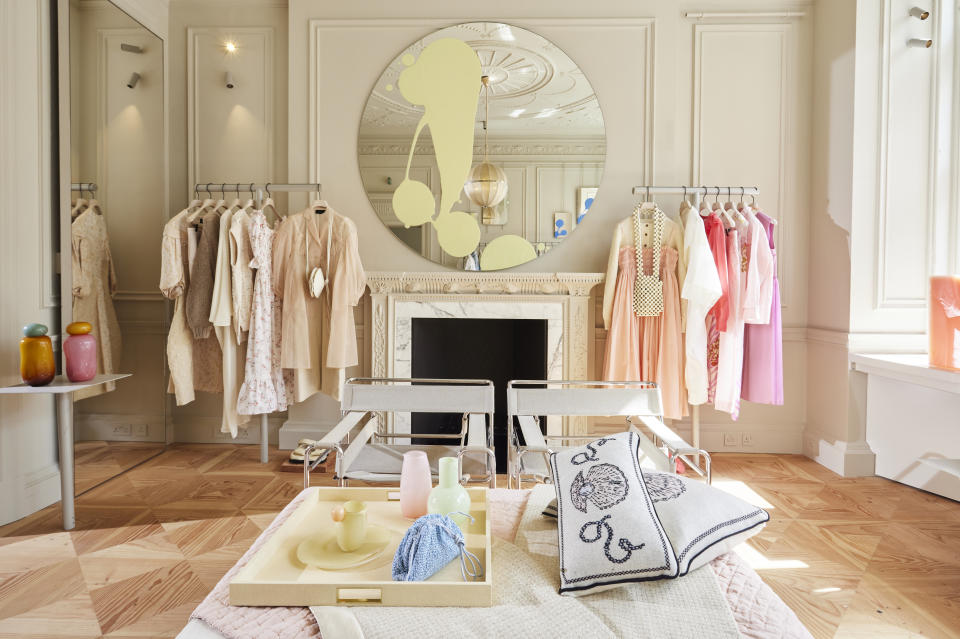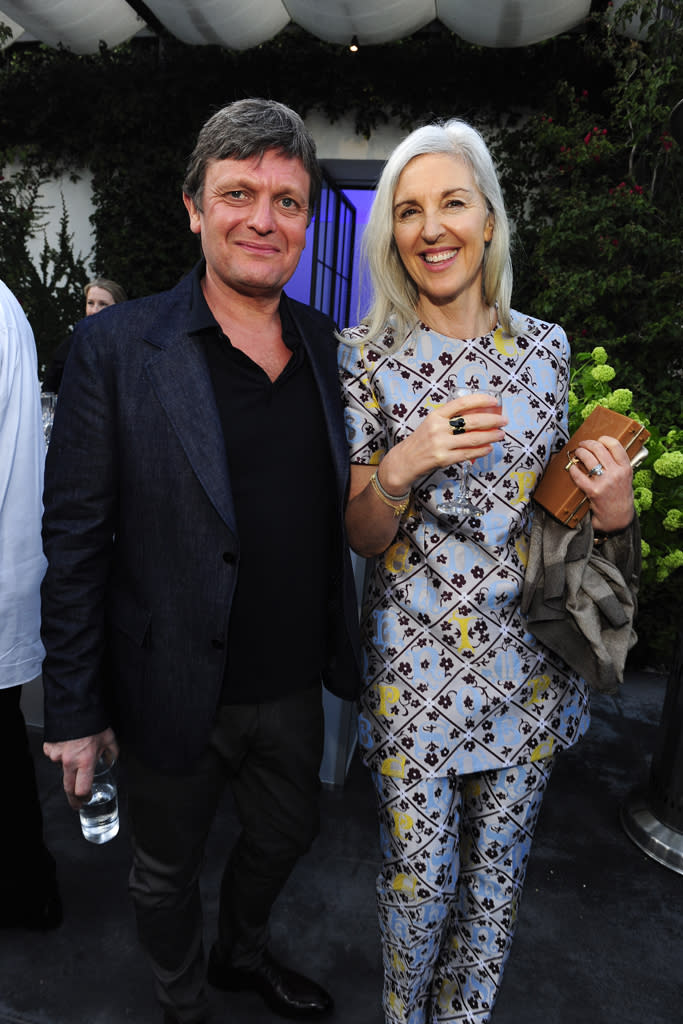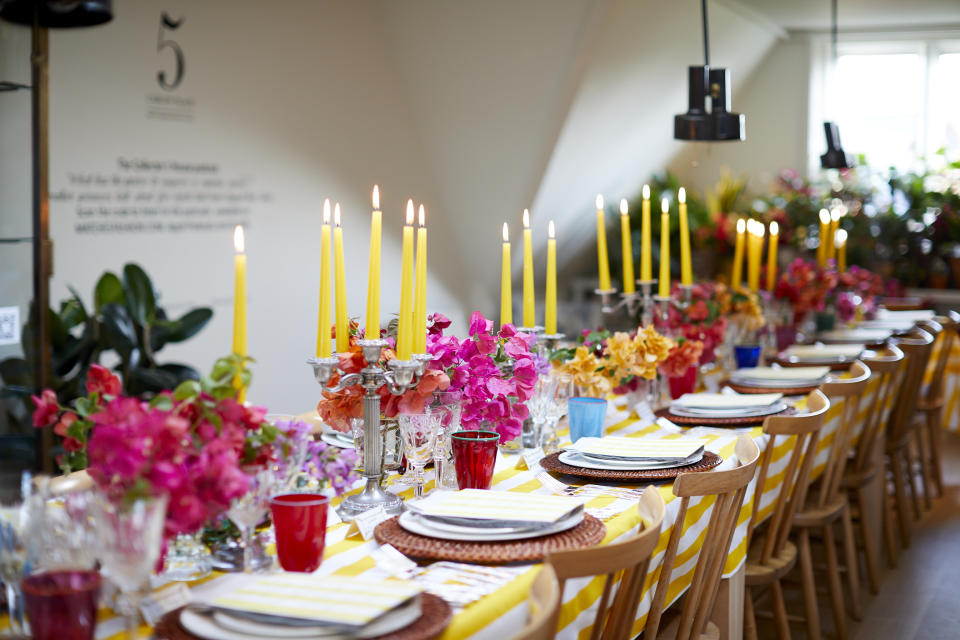Matches Founders Tom and Ruth Chapman on Its Demise and Luxury Ecommerce 2.0

LONDON — Matches, which was placed into administration earlier this year by Mike Ashley’s Frasers Group, has been on a roller-coaster ride since Tom and Ruth Chapman sold it to Apax in 2017, in a deal valued at an eye-watering $1 billion.
Its crash has left designers and brands millions of pounds out of pocket, while customers continue to wonder what went wrong at the store that had once been a thriving luxury fashion hub.
More from WWD
CNN Champions for Change 2024: 4Kinship Indigenous Fashion Brand Founder Amy Denet Deal
How Claire's Has Maintained Its Resonance Among Young Generations for More Than 60 Years
Having started in 1987 as a single store in Wimbledon, Matches became an early mover in the luxury e-commerce space and a pioneer of experiential retail.
The Chapmans opened a lavish town house space in Mayfair where they hosted regular events; whisked VIP customers on exotic trunk shows abroad, and engaged others with podcasts, cultural moments, and pop-up spaces in various fashion cities.
By the time they sold the omnichannel retailer in 2017, it had revenues of nearly 300 million pounds and profit after tax of 19 million pounds.
They were confident handing over to Apax and their hopes were high. Apax was confident, too, mulling an IPO in the go-go years of luxury e-commerce.

Then the pandemic struck and new Brexit-related restrictions made international trade more challenging. Apax lost its focus, and Matches was bleeding money.
Between 2017 and 2022, the company had four chief executive officers (not counting the temporary ones). Apax pinned its final hopes on number four, the former CEO of Asos Nick Beighton, and the turnaround job was a big one.
According to the latest figures available on Companies House in the U.K., Matches reported revenue of 380 million pounds and losses of nearly 71 million pounds in fiscal 2022.
Ashley, who bought Matches at a knockdown price just before Christmas in a deal valued at 52 million pounds, has since repurchased the retailer’s intellectual property. He’s licensed it back to the administrators, Teneo, as they attempt to clear the final stock from Matches’ three London stores and warehouse.
The Chapmans have moved on. Tom has a new home interiors business called Abask, an online platform he founded with a former Matches colleague, Nicolas Pickaerts. Ruth is writing screenplays. Despite their new lives, both say they are saddened and disappointed by the collapse of the business.
In an exclusive interview with WWD, the couple talked about missed opportunities and what luxury online retail 2.0 might look like.
WWD: What were your expectations for Matches when you sold it Apax in 2017?
Tom Chapman: Ruth and I built a business that was based on an understanding of the customer and an appreciation for the client. Every decision we made was from a customer perspective, and considered the customer experience. The business we sold was incredibly successful. We were driving 300 million pounds in net revenue, and had an achievable objective of 40 million pounds in EBITDA [earnings before interest, taxes, depreciation and amortization].
WWD: How do you feel about its demise?
T.C.: When we sold the business to Apax, Ruth and I told them, “We want to be surprised and delighted by what you do. We don’t expect you to do the same thing as us — do it differently.” But that’s not what happened. We always built a business around relationships, we partnered with people and supported the brands. Now, so many of those people have been seriously impacted and some may lose their businesses as a result, and that is depressing.
Ruth Chapman: Although we had good partners, I think private equity is tricky. Apax are a very reputable firm, but when you bring men with business degrees and certain business models into the fashion arena, it just doesn’t work. First of all, you need a woman leading and you need women on the board. You need to really understand the sensitivities of the brands, clients and customers and you need to stay in touch with them. If the customer and the brands lose confidence, it’s just a disaster. Also, chasing growth over profitability is never a good idea.

WWD: What happened once Apax took over?
T.C.: I actually really liked the guys at Apax. They’re good and they’re smart, but they’re numbers people. They also felt that some members of the management team were not strong enough, so they started to shift people around and that, to me, made no sense. They didn’t understand that when you are running a retail business, absolutely every single aspect of every single detail needs to be thought about.
You have to have your eyes on so many things and you’ve got to run on the principles of magic and logic: the magic of the customer experience and the logic of an e-commerce business. I think, over a period of six years, that magic completely disappeared, the curation disappeared, as did the understanding of the consumer. They were paralyzed by fear and by performance anxiety, which resulted in massive promotional activity.
R.C.: Even when we sold, and when Matches had a certain scale, we knew who our customer was, and we were really taking care of them. Number one: you take care of your customers. That was lost immediately when we left, and the curation was lost immediately, and it went in a different direction.
WWD: How was Apax running the business?
T.C.: From my perspective, Apax bought the business because they wanted to initial public offering it. It’s something that Ruth and I had considered, but I didn’t want to be involved in a public company. I think Apax had planned to switch it around in a year or two, but things started to go wrong and the performance wasn’t there. The losses started to outweigh the profits quite dramatically.
The industry as a whole was also facing challenges. Brexit was a massive challenge. Exporting out of the U.K. was such a big issue that it became a distraction to the operations of the business. COVID was another challenge for a business that was so forward-order based, so driven by party dresses, and celebrating. The pivot back to reality didn’t happen fast enough.
WWD: How has luxury retail business evolved since you sold Matches, and how have the big luxury brands changed the online landscape?
T.C.: I always had this policy that no one brand should have more than 6 percent of our total performance. But all of these major [brands] had huge growth aspirations and began driving significant percentages, much bigger than 6 percent. The problem is that you become too dependent on them and the curation no longer looks like yours.
While we were still at Matches, the big brands wanted to move to a concession model so they could control the inventory. We’d already seen it happen with the department stores. When a brand starts to give an e-commerce player 30 to 35 percent of its margin, that e-commerce player cannot be profitable. There are logistics costs, operations costs. Everything falls to pieces. From my perspective, we should have rejected those deals and gone back to the core of what made us unique, a place where the customer could find unsung pieces, ones they couldn’t find anywhere else.
The wonderful thing about a being a multibrand retailer is that you can manage your business according to your considerations of where the market is going. You are the person who creates the demand. You can talk to customers about so many things, you can repurpose product, you can find the hook to engage customers. When you’re selling these big brands, all you have is [their] selection, their advertising campaign. That’s it.

WWD: What are some of the other drawbacks of e-concessions?
T.C.: As retailers, we were all offered the same product. The brands keep the good stock for their retail spaces because they have an even better margin in their own stores. Also, we weren’t given the right replenishment levels. What we were given was “airport” fodder. [Had we still been at Matches] I think Ruth would have turned around and said, “Let’s pull away from it and go back to what’s great. Our sales will suffer, but we’re going to be profitable.”
WWD: What about markdowns? How have they impacted the business?
R.C.: It’s a self-defeating cycle. You have to mark down earlier, then everyone starts doing it, and it just doesn’t work. It’s fear-driven, and you can’t drive a business like that. You need your own point of view, your own position on something. Play by the full-price rules and only buy what you can sell at full price. And you have to cater to a full-price customer. The bargain-hunters will have to wait for the small percentage [of merchandise] that goes to markdown at the end. I am interested in the customer who appreciates the beauty, and all the design and craftsmanship that has gone into making something, the customer who’s willing to pay full price. We also have to make that customer feel special. We can’t buy millions of one fabulous piece. We have to buy a limited number and then it’s first come, first served.

WWD: With all of the changes that have buffeted luxury online retail over the past few years, what will it take for the sector to rise again?
T.C.: What we’re experiencing right now in the industry is a correction. There’s so much product out there, so much of the same thing. You’re not finding that uniqueness. But there will be people who will rise from the ashes of this, people who really understand their customer, who have a relationship with them. People who will run successful e-commerce businesses by looking at how to manage brands properly, and how to build relationships. It’s our job to inspire, consider, and connect our customers, our people, our brands — and that has been lost.
WWD: Can you talk more about what luxury multibrand e-commerce 2.0 might look like?
T.C.: The next 12 months are going to be a little bit of a car crash, and incredibly challenging for the designers as well. There’s a lot of inventory out there that needs to be addressed. [But eventually] luxury e-commerce will be driven by retailers who think less about growth and more about what they can do to run a profitable business. It will be more focused and will find the points of difference. They’ll be working on interesting collaborations, doing unique things. There has to be an element of curation, because through curation, you have great AOVs and great repeat business, and those are the drivers [of multibrand retail].
If you have a leaky bucket of customers who are looking for a particular product, and who’ll go anywhere to buy that product, then there is no loyalty — they just want the piece. It means you’re having to buy new customers every year. It means you spend your money on marketing and you never having profitable revenue. If you can get your repeat business to 70 percent, you can grow very successfully. You’re not having to buy all of those new customers.
R.C.: [The next wave of retail] is going to take a strong point of view, a strongly boundaried position in the market. It will be about not trying to grow fast, but trying to remain in profitability and not chasing this idea of wanting to be the global number one. It will be about having your own principles and staying with them.
There also has to be a fashion sensibility, and a point of view. I quite like La Garçonne out of the U.S. because they have a point of view. It’s not my point of view, but I’m sure they have a strong customer following. They have a global business and a very specific perspective on fashion. And they’re not promoting all the time, which is interesting to me.
WWD: What about the brands? How do they move forward from an e-commerce perspective?
R.C.: The bigger brands, like Prada and LVMH [Moët Hennessy Louis Vuitton] are really doing their own thing, and I don’t think they’ll be tempted into multibrand e-commerce again unless it’s really special and a very curated situation. Then there are all these great brands that are doing their own direct-to-consumer now that I really admire. Me+Em are becoming a household name right now. They are cleaning up. [The founder, Clare Hornby] does her own thing and she’s marching on. She’s smart and she’s making great clothes. There’s no luxury snobbery about it, it’s not expensive, and it’s well made. I really admire that.

WWD: What about the smaller British runway designers? How can they make ecommerce work going forward?
R.C.: I feel very sad for the designers in London like Roksanda and Christopher Kane, the people who got stung particularly by Matches, and by other situations, too. How they take their businesses forward will be interesting. I also think that made-to-measure done by those beautiful designers will become increasingly important. We all want something special, and a bit of service. Service is the thing that people come for at the end of the day.
WWD: What would be your advice to anyone involved in multibrand luxury e-commerce right now?
R.C.: Don’t look sideways. In the office we always used to say, “Don’t look at what everyone else is doing. We’re doing what we’re doing.” Also, while data is really important, it’s only 50 percent of the potion. You need human beings, you need great girls on the styling team giving [customers] confidence. You need confident stylists, a confident [tech team].
E-commerce is not just about clicking a button. It’s also about [a customer] being able to phone up and ask for support. It’s also about easy returns. [Nowadays] the customer has to do too much. They shouldn’t have to do anything — just tick a box, and maybe stick the label on something. But it shouldn’t be so complex. We have to make everything as easy as possible for the customer.
Best of WWD

 Yahoo Finance
Yahoo Finance 